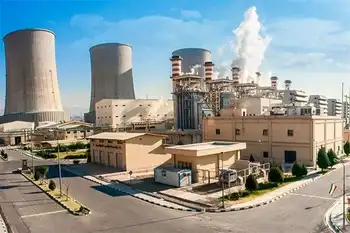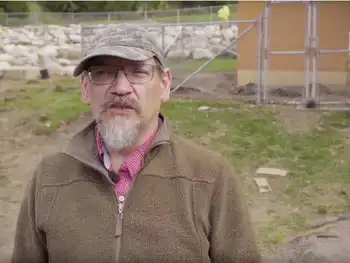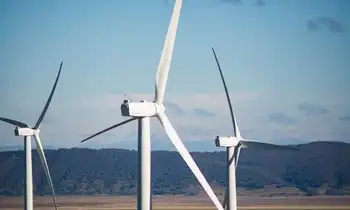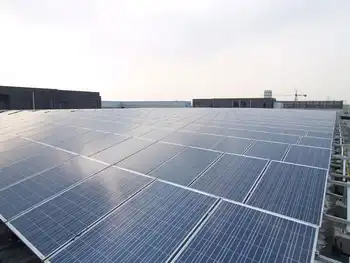MidAmerican customers may help finance study
By Le Mars Daily Sentinel
CSA Z463 Electrical Maintenance
Our customized live online or in‑person group training can be delivered to your staff at your location.
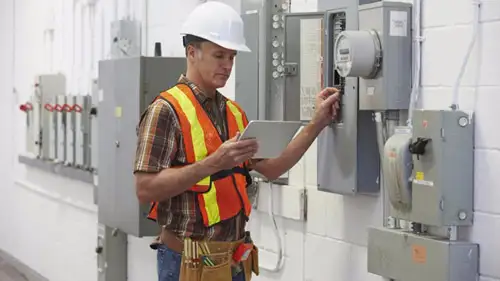
- Live Online
- 6 hours Instructor-led
- Group Training Available
The increase would come if Iowa Gov. Chet Culver signs a bill to allow MidAmerican to boost electric consumer payments throughout the state by $15 million to study the possibility of bringing a second nuclear plant to Iowa.
Customers would pay 31 cents each month for the next three years, said Ann Thelen, spokeswoman for MidAmerican.
MidAmerican couldn't increase its rates because of a rate freeze and needed legislation to add the increase to electric consumer bills.
Both the House and Senate were involved in the development of the bill — House File 2399 — which passed the Iowa Senate by a vote of 37-13 and the House, 91-7, a few weeks before.
Rep. Chuck Soderberg, of Le Mars, and Sen. Randy Feenstra, of Hull, support the bill. The bill is not a commitment to build a nuclear plant, said Thelen.
If it becomes law, MidAmerican could use those customer dollars to conduct studies analyzing the feasibility of building another nuclear power plant to Iowa, explained Soderberg.
Iowa currently has one nuclear power plant — the Duane Arnold Energy Center near Palo. But having another would increase the state's base load generation, he said.
Soderberg defined base load generation as a facility available 100 percent of the time, unlike other power sources such as wind and solar energy.
"We've continued to look at wind generation that has been developed in northwest Iowa, but the availability of that is only about 30-40 percent of the time," Soderberg said "Base load generation is there so that when we flip the lights on we know it's going to come on."
Currently, base load generation is primarily coal and natural gas in Iowa.
Due to a restraint on carbon being discussed through the U.S, the only other option for base load generation is nuclear power, Soderberg said.
More base load would be available for those who use electricity if another nuclear plant is built so they'd benefit from the outcome of the study, Soderberg said.
He added that searching for an increase in base load power could help support the economy.
"I think this is probably pretty important for the growth of Iowa," Soderberg said, "because with the growth of Iowa, comes the use of electricity so we need to make sure we have available power if we're going to grow the economy."
Soderberg also feels the three-year study will be important because it would look at how Iowa can utilize the existing coal and natural gas plants as far as capturing carbon and storing it in existing power plants.
"It's kind of a two-fold study over a three-year period," Soderberg said.
After that time period, MidAmerican will have to go through a contested rate case, explained Soderberg.
He said if the expenses, the objective and the whole study are not performed as agreed to, MidAmerican could potentially be responsible for reimbursing electric customers for each month they paid 31 cents.
"The one thing that I think we all want is a good reliable, very reasonably priced power and that's kind of the whole objective of this," Soderberg said.
Now is the time for the study, according to Feenstra.
In 2001, the Iowa legislature passed a bill to increase base load generation, said Feenstra.
But due to through legislative interference, two clean coal plants — one near Marshalltown and one near Waterloo — were cancelled.
"Now we're nearly 10 years from that 2001 study and we haven't created any base load generation," Feenstra said. "The state has got to do something."
Feenstra is not against wind energy or solar power but feels there is more base load with nuclear power.
"When it's a hot, humid day in the middle of summer, wind turbines don't turn, or when it's a cloudy, clammy in the winter, we don't get solar power," Feenstra said. "You got to have some base load and that's why I think nuclear energy is a viable source."
Through technological advances over the last 10-12 years, specifically the European technology, some very safe ways to create nuclear energy have been created, said Feenstra.
He said people who were against the bill believe it wouldn't help the carbon footprint of Iowa.
"It just seemed like those who were against [the bill], did not come up with a solution to solve base load generation," Feenstra said."
If the decision was made today to build a nuclear power plant, it would take 10-14 years to build, Feenstra and Soderberg said.
In speaking with a few Plymouth County MidAmerican electric consumers, several were not aware of the bill.
One Le Mars woman who had heard of the proposed rate increase said, "I'm not really sure what to think about it. It's not going to make or break the bank, but the idea of having another nuclear plant in Iowa could be disastrous if there's an explosion."
The governor has about 30 days to review the bill and determine whether he will sign it.
"I think that we're 10 years behind; we should have done something 10 years ago and to look at nuclear," Feenstra said. "I just hope our economy in Iowa can hold out that long."






